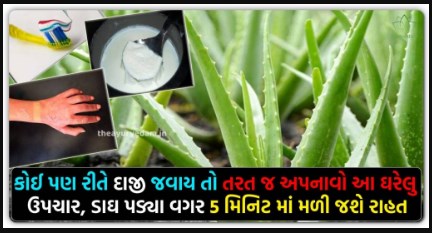Immediate treatment for burns
- Applying crushed oil on the burnt wound is very beneficial.
- Immediately after rubbing the copra or potato on the burnt wound, there will be no blisters.
- Applying henna leaves with a bowl of water on the burnt wound gives relief.
- Applying mashed, sticky, bandaged ripe bananas on the burnt wound gives immediate relief and relief.
- Applying basil juice and coprale boiled on the burn wound, the inflammation of the burn is eliminated and the follicular wound heals quickly.
- If it is scorched by hot water or steam, sprinkling rice flour on that part gives much relief.
- Wounds, sores, boils, ulcers, smallpox in which there is a lot of inflammation.
- Applying mashed onion immediately on the burnt wound gives quick relief.
- Before the blisters appear on the scalp, take raw potatoes and apply it on the stone. This relieves the pain and inflammation of the scalp and does not cause blisters or blemishes. Apply this three to four times a day.
- Dip one foot into warm paraffin and apply it on the affected area.
- Applying kerosene on the scalp gives a lot of relief and heals quickly.
- First pour buttermilk or cold water over the scalp. Peel a squash, grate it and squeeze the juice. This reduces inflammation and heals faster.
- A thin solution of chickpea flour on top of the dazya...
Keep the burnt part under tap water for 15 minutes but do not apply ice under any circumstances.
There is an old tradition of applying butter, ghee or oil on the burnt part but it is of no use. Instead, a good solution is to apply any good antiseptic ointment on the skin.
Do not leave the skin exposed when it has been burned. Don't even pay Rs. Tie a bandage of stylized gauze in such a way that there is no pressure on the burned area so as not to infect the bacteria in the air outside.
If there is a rash on the skin at the site of burns, it is not necessary to cut the skin of the rash.
The severity of the burn depends on the depth of the injury and how much tissue is affected. In medical terms this is known as first degree, second degree and third degree burns. First degree burns are not so severe. The burned area becomes red, painful, burns and swelling. Sometimes water leaks out.
Second degree burns affect the lower layers of the skin. There is a lot of pain on the burned part. Affects the lower layers of the skin. There is a lot of pain on the burned part. The skin becomes swollen and red or completely white.
The swollen area is filled with a thick transparent liquid. Third degree burns are the most dangerous. The upper part of the skin sometimes looks normal. And the seriousness is not even known. There is no sensation of touching the burnt part. The burned area also appears red due to the breakdown of blood cells. The fur on burnt skin can be easily removed from the roots. The brain does not experience pain as the nerve endings below the burn part are heard.
The difference between a deep second degree burn and a third degree burn becomes difficult to identify for days.


No comments:
Post a Comment